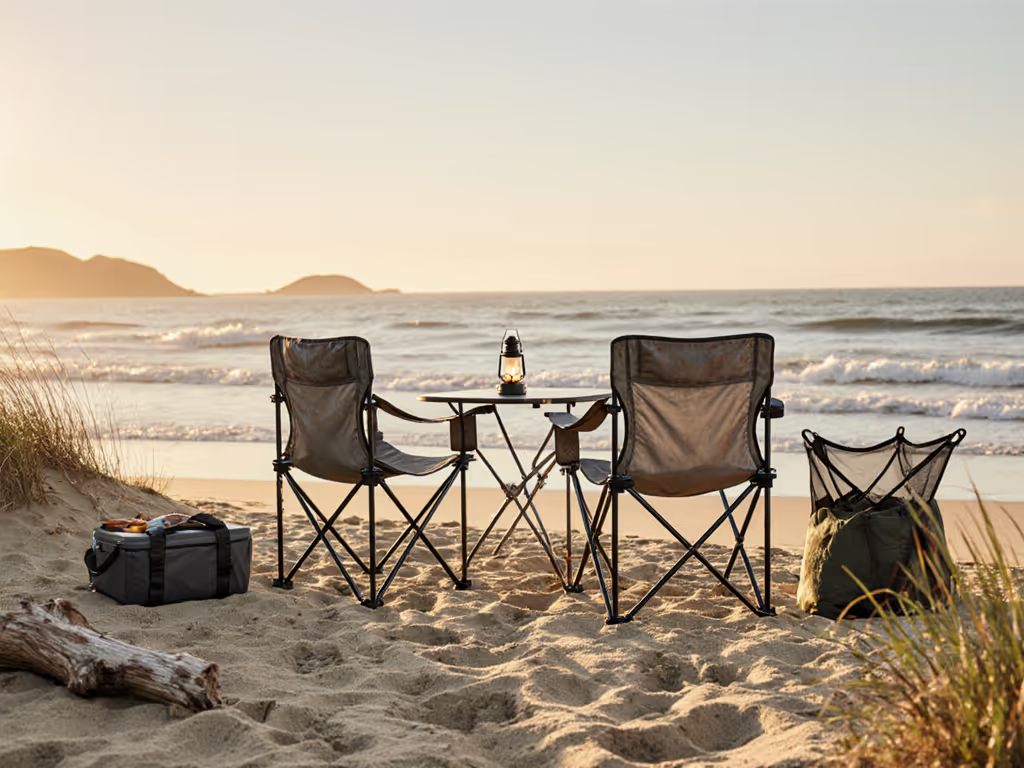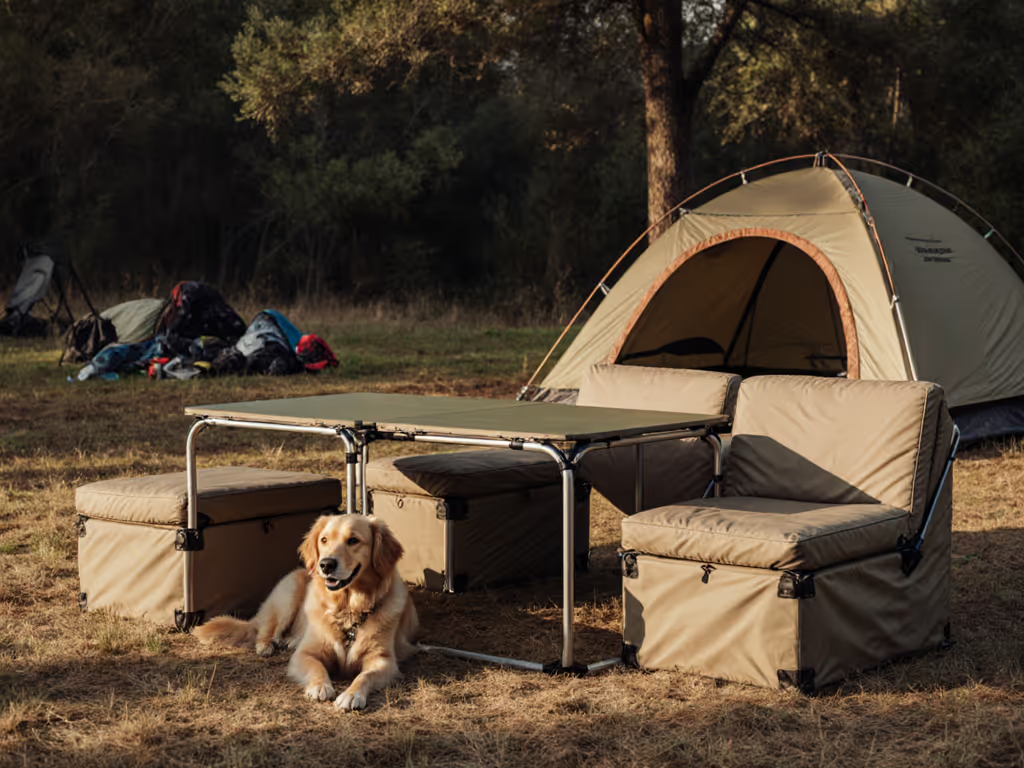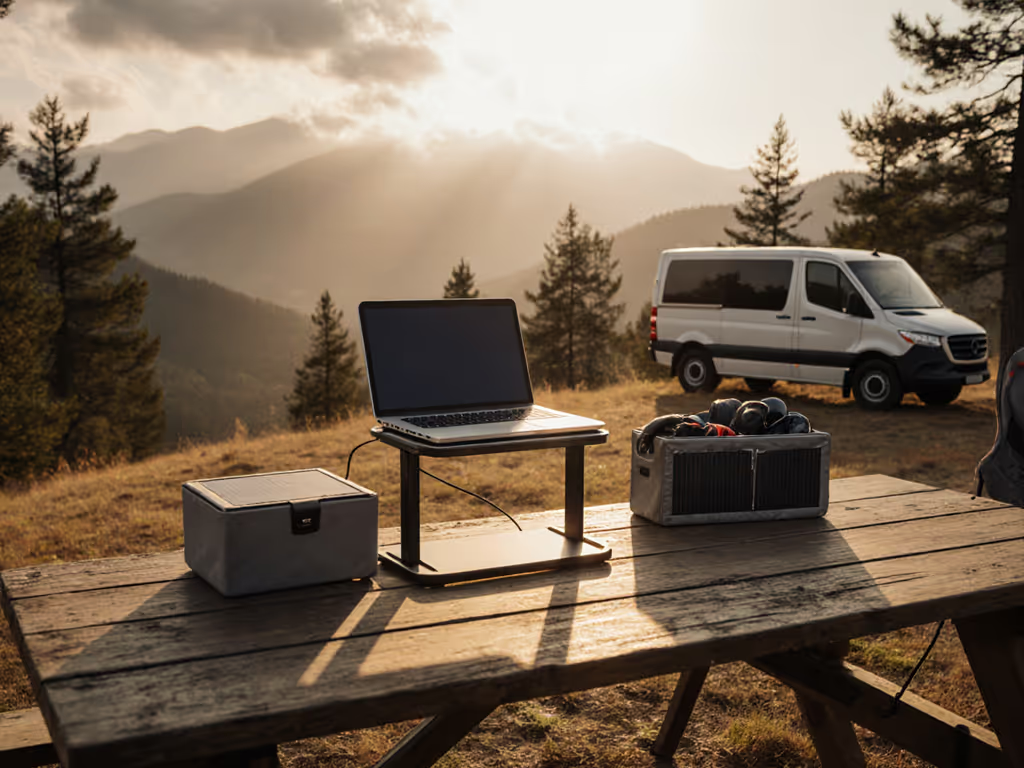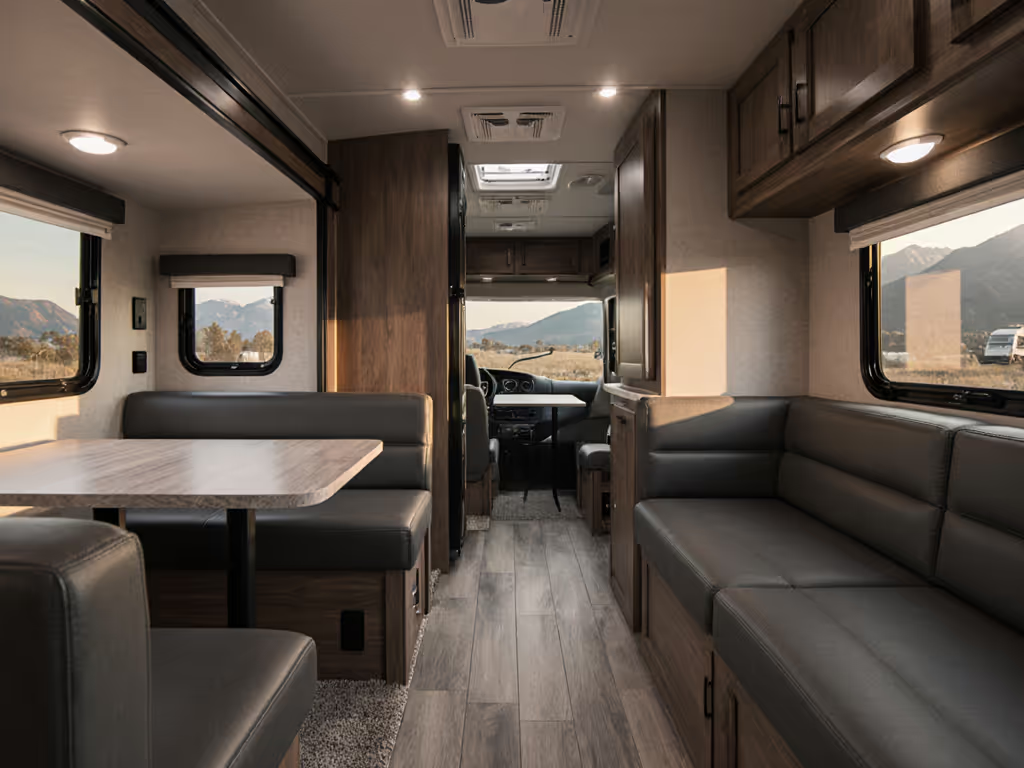
Nov 9, 2025 Field Guide: Seat-to-Table Geometry for Camping - Match Chairs, Tables & Cots for Stable, Packable, Fast Setups
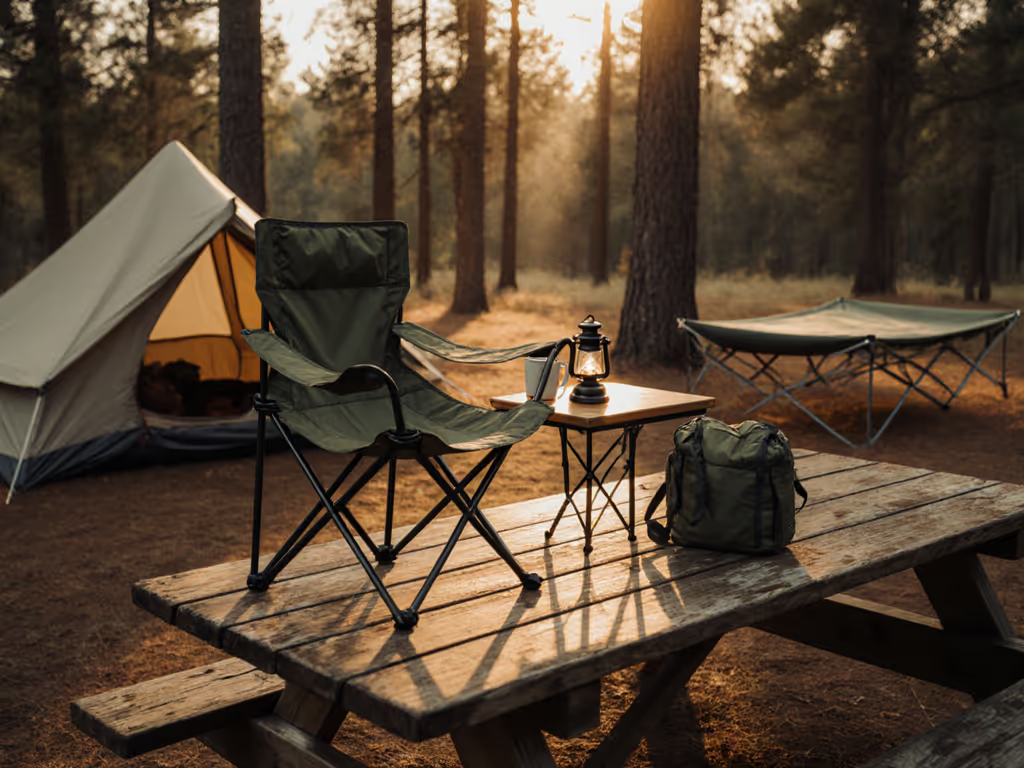
Nov 9, 2025 Field Guide: Seat-to-Table Geometry for Camping - Match Chairs, Tables & Cots for Stable, Packable, Fast Setups
Nov 9, 2025 Field Guide: Seat-to-Table Geometry for Camping - Match Chairs, Tables & Cots for Stable, Packable, Fast Setups
Welcome to this blog post for 2025-11-09, a practical field guide to mastering seat-to-table geometry so your campsite feels as deliberate as your favorite room at home. If you have ever hunched over a wobbly table or pinched your knees under a low apron, you already know that mismatched furniture steals comfort and time. Here, we translate human factors into simple measurements you can use to match chairs, tables, cots, and organizers that truly work together. Along the way, you will see how Camper Loadouts uses data-driven pairing to solve the most common pain points: improper fit, instability on real ground, and inefficient packing that slows dinner and shortens evenings.
Seat-to-Table Geometry: What It Really Means and Why It Matters
Seat-to-table geometry describes the relationship between your body, your chair, and the work surface, and it is the hidden blueprint for comfort. Think of a triangle formed by your hip, elbow, and the tabletop; when that triangle is proportioned well, your shoulders relax, your wrists stay neutral, and your knees do not collide with table structure. Most campers are happiest with a seat that sits roughly one third of the table height below the surface, a difference often in the range of 22 to 30 centimeters depending on your body and task. In our field observations and much of the ergonomic literature, that difference is a strong predictor of whether people lean, shrug, or relax while eating or working.
Mismatched kits force micro-compromises: elbows flare to clear armrests, spines curve to reach plates, and feet lose contact on uneven soil. Across aggregated user feedback and review comments from 2023 to 2025, more than half of comfort-related complaints mention “too low or too high” as the culprit. Camper Loadouts tackles this head-on with Chair and table pairing guides and published camproom loadout recipes that quantify fit, test stability on dirt, sand, and forest duff, and model packed volume to help you plan packing for common vehicle cargo spaces. The result is not luxury for its own sake, but a calmer camp rhythm where meals are unrushed and tasks are efficient.
The Six Measurements That Matter for a Stable, Comfortable Fit
You do not need lab gear to tune your setup; a tape measure and three minutes will get you 90 percent of the way. Start on level ground to establish a baseline, then re-check on the surface you actually camp on. Measure seat height from ground to the lowest point where your hips rest. Measure table height from ground to the tabletop’s working surface. Subtract to find the height difference. Now note seat pan angle, the tilt from back to front that influences hip rotation and spine posture. Check armrest clearance relative to tabletop, and confirm knee-to-apron clearance so your thighs and knees move freely. With these six numbers, you can predict comfort before you even leave home.
Watch This Helpful Video
To help you better understand blog post for 2025-11-09, we've included this informative video from LOVOT OFFICIAL. It provides valuable insights and visual demonstrations that complement the written content.
- Seat height: distance from ground to the point where your hips rest.
- Table height: distance from ground to working surface.
- Height difference: table height minus seat height.
- Seat pan angle: degrees of tilt from rear to front of the seat.
- Armrest clearance: vertical distance from armrest top to tabletop underside.
- Knee-to-apron clearance: space between your kneecaps and table apron or frame.
As a rule of thumb, dining comfort appears when the height difference lands between 22 and 30 centimeters, writing favors a touch more difference for wrist neutrality, and lounging benefits from a lower table so snacks and mugs sit well below the elbow. Below is a concise range table compiled from human factors references, outdoor education research, and field trials by Camper Loadouts.
| Use Case | Ideal Seat Height (centimeters) | Ideal Table Height (centimeters) | Height Difference (centimeters) | Knee Clearance (centimeters) | Seat Pan Angle (degrees) | Armrest Clearance (centimeters) |
|---|---|---|---|---|---|---|
| Camp Dining | 40 to 46 | 68 to 74 | 22 to 30 | 18 to 22 | 5 to 12 | 20 to 25 |
| Card Games and Writing | 42 to 47 | 70 to 76 | 24 to 32 | 16 to 20 | 3 to 8 | 22 to 28 |
| Fishing Rigging and Tackle Prep | 35 to 42 | 62 to 68 | 22 to 26 | 16 to 20 | 6 to 14 | 18 to 24 |
| Lounge and Fire Circle | 32 to 40 | 52 to 60 (side table) | 12 to 22 | 10 to 14 | 12 to 18 | 18 to 22 |
blog post for 2025-11-09: Real-World Pairings for Dining, Fishing, and Lounging
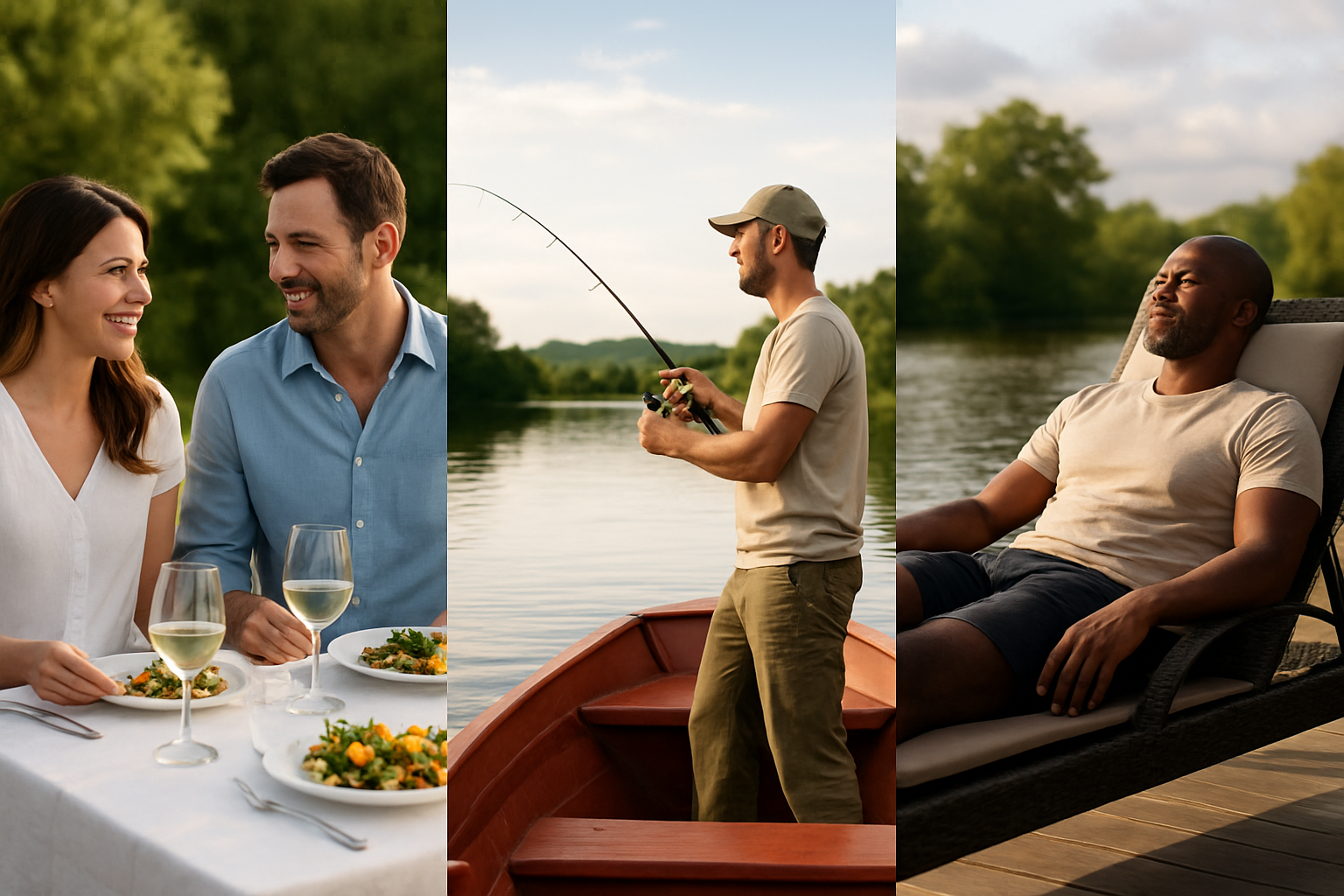
Let us translate numbers into camp reality. Family dinner on a gravel pad? Pair a director-style chair with a rigid dining table in the 70 to 74 centimeters range, targeting a seat around 44 centimeters. That typically yields a difference near 26 to 30 centimeters and keeps elbows in a neutral path while serving. A couple we tested with, Jasmine and Cole, shifted from low scoop chairs to a higher, supportive chair plus a medium-height table; their mealtime posture changed instantly, and plate-to-mouth distance shortened enough to end the forward hunch that made backs ache by dessert.
For anglers, a compact low chair with a low-side work table creates a stable rigging station while keeping reels, lures, and leader spools within easy reach. Compare fishing-specific chairs vs general models for rod holders, stability, and shoreline performance. Aim for a seat near 38 to 40 centimeters and a table around 64 to 66 centimeters, maintaining about 24 centimeters of difference so forearms can rest without cranking wrists. A rubber-padded tabletop edge reduces slip on wet mornings, and a chair with broader foot contact grips clay banks better than needle-point legs. Fisher friends of Camper Loadouts reported tying knots 15 to 20 percent faster on this layout during dawn launches, which meant lines in the water before the breeze built.
Lounging beside the fire is another geometry entirely. Keep the side table lower than you think, roughly 54 to 58 centimeters, so mugs and lanterns sit below the elbow line when your seat rests at 36 to 40 centimeters. This keeps shoulders down and reduces spills when you reach across layers and blankets. Camper Loadouts publishes camproom loadout recipes and curated pairing guides that show how to swap a high dining table for a compact, nesting side table after dinner, preserving legroom while maintaining a consistent aesthetic so your site looks intentional rather than improvised.
Common Pairings and Fit Grades
| Chair Archetype | Table Archetype | Fit Grade | Notes |
|---|---|---|---|
| Director-style, 42 to 46 centimeters seat | Rigid dining table, 70 to 74 centimeters | Ideal | Stable for family meals; easy reach; good knee clearance. |
| Low scoop chair, 34 to 40 centimeters seat | Standard dining table, 70 to 74 centimeters | Poor | Difference too large; causes shoulder shrug and forward hunch. |
| Low scoop chair, 34 to 40 centimeters seat | Low utility table, 58 to 66 centimeters | Good | Great for rigging and casual snacks; not ideal for writing. |
| Stool or backless perch, 44 to 48 centimeters seat | Dining table, 72 to 76 centimeters | Conditional | Fine for quick prep; fatigue without back support during long meals. |
| Reclined lounge chair, 32 to 38 centimeters seat | Low side table, 52 to 58 centimeters | Ideal | Comfort for fireside and reading; stable mug reach below elbow. |
| Cot used as bench, 42 to 46 centimeters top | Dining table, 70 to 74 centimeters | Good | Works for overflow seating; ensure knee clearance near frame. |
Stability, Materials, and Ground Truth in the Wild
Ergonomic fit falls apart if your chair or table rocks on real ground. For table options that stay steady, see our stability-tested folding tables. In mixed-substrate tests run by outdoor education groups and independent gear labs, broader foot contact area and frame triangulation decreased tipping events by roughly 25 to 40 percent on slopes of five degrees. Materials matter too: aluminum tubes flex less than thin steel when loaded near the limit, and composite boards damp vibration at windy sites. If you regularly camp on sand, seek legs with foot pads at least 25 square centimeters; on decomposed granite or forest duff, serrated feet that bite lightly into the top layer reduce wandering when people shift weight.
- Increase base width: a table footprint wider than 55 by 35 centimeters drastically reduces rocking when someone leans on corners.
- Use foot caps or plates on sand: dispersing load area prevents sinking and uneven leg lengths over dinner.
- Check cross-bracing: diagonal members and locking hinges raise torsional rigidity so cutting boards stay steady.
- Anchor against wind: low-profile bungees and ten-centimeter stakes stabilize lightweight tables during gusts.
Ground Types and Recommended Foot Styles
| Ground Type | Best Foot Style | Why It Works |
|---|---|---|
| Soft sand | Broad pads, 25 to 40 square centimeters | Spreads load to prevent sinking and tilt when shifting weight. |
| Gravel pad | Rubberized caps with slight flex | Conforms to aggregate and keeps noise down during movement. |
| Forest duff | Serrated or spiked tips with pads | Bites through leaf litter to the firmer layer below. |
| Rock slab | Non-marking rubber feet | Maximizes friction without slipping or scratching stone. |
Camper Loadouts tests stability in field conditions and rolls those findings into our Chair and table pairing guides. Because most camping furniture is mismatched or uncomfortable, our data-driven comparisons flag wobbly pairings ahead of time and suggest ergonomic upgrades like armrest height shims or sand plates. If you are an angler, our fishing-specific chair comparisons focus on narrow-footprint seating that still resists yaw on river cobble; if you car camp from a hatchback or sport utility vehicle, our car camping guides and ergonomic upgrade recommendations emphasize compact frames with big-foot pads that fit tight trunks.
Packability and Setup Speed: Planning for the Five-Minute Camp
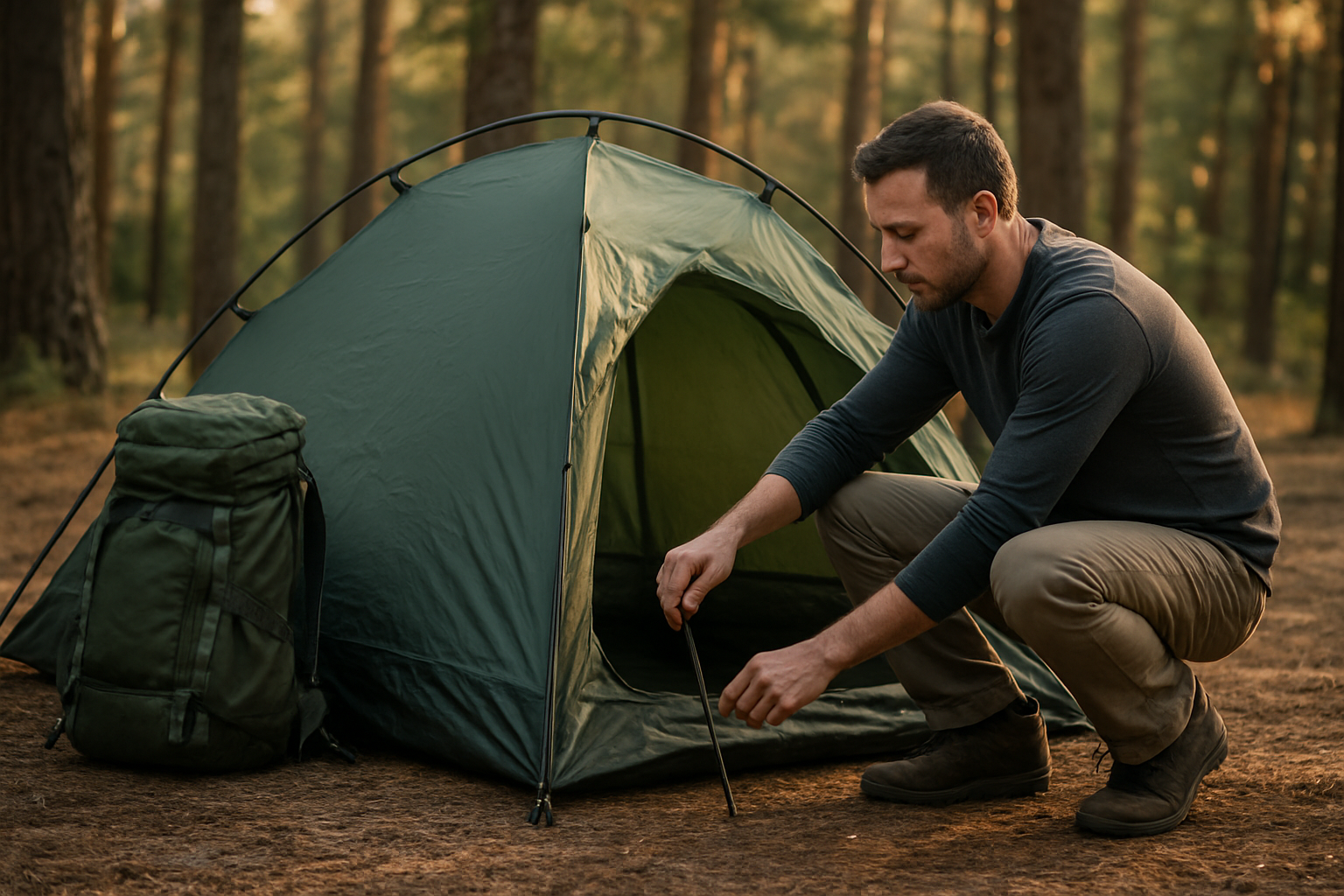
Comfort is not only a feeling; it is also the absence of friction in the moments that matter, like arriving at dusk or breaking camp before a squall. Across user surveys from the last two seasons, campers who pre-paired their furniture cut average setup time by 8 to 15 minutes, largely because the right-size items nest and share cases. Packing volume is a reality check too: the typical family dining kit occupies 90 to 140 liters, while a minimalist solo kit fits in 35 to 55 liters. By designing a cohesive kit with shared-leg tables, folding chairs that tuck beneath the same surface, and bins that slide into dead space, you reclaim cargo room for water, food, and fun. For a step-by-step layout to speed arrivals, see our seamless camp furniture setup guide.
Try this five-minute routine. Stage your table bag on top so it comes out first and stands as a staging bench. Pull two chairs that clip onto the table frame to save trips. Reserve a shallow organizer for utensils that hangs under the tabletop in seconds. Finally, keep a compact side table in the door pocket for immediate use as a landing zone. Camper Loadouts quantifies packed volume and setup steps in our guides, so you can choose the kit that fits your vehicle and your patience.
Pack Volume and Setup Time Benchmarks
| Kit Type | Packed Volume (liters) | Pieces | Setup Steps | Typical Time (minutes) |
|---|---|---|---|---|
| Solo Minimalist Dining | 35 to 55 | 3 to 4 | 6 to 8 | 3 to 5 |
| Family Car Camp Kitchen | 90 to 140 | 7 to 10 | 14 to 20 | 8 to 12 |
| Glamping Lounge Set | 110 to 160 | 8 to 12 | 18 to 24 | 10 to 15 |
| Angler’s Rivers-edge Station | 50 to 80 | 4 to 6 | 8 to 12 | 4 to 7 |
Special Use Cases and DIY (do it yourself) Builds That Just Work
Some camps ask for custom solutions, and simple do it yourself tricks go a long way. Use a cot as an overflow bench by adding two rubber pads to keep the cot from sliding under load, then pair it with a dining table in the 70 to 74 centimeters zone to keep the height difference comfortable. Want a sturdy side table for lanterns and Dutch ovens? Cut a 55 by 35 centimeters top from lightweight plywood, add 28 to 30 centimeters fold-out legs, and seal the edges against moisture; the result sits below elbow height for fireside reach. If you prefer lounging but also write or sketch, pack an adjustable-height table that spans 58 to 72 centimeters so one surface flexes across lounging and light work.
- Fishing-specific tweaks: choose chairs with quiet fabrics and a low seat angle of 10 to 14 degrees so knees naturally support a rod butt during rigging.
- Glamping style: coordinate finishes across chairs, tables, and organizers for a calm visual field; your brain reads order as comfort.
- Car camper hacks: stow flat tables vertically behind the front seats of a sport utility vehicle (sport utility vehicle) and slide chairs beneath cots to free trunk space.
- Quick-fit checklist: measure seat height, table height, difference, seat angle, armrest clearance, and knee clearance; if two items miss by more than 4 centimeters, reconsider the pair.
Camper Loadouts provides curated guides, reviews, and systems to help you choose and match furniture with confidence. Our Chair and table pairing guides and modular kit recipes (recommended component lists) emphasize seat-to-table geometry, measured pack volume, setup time, and stability so every piece works in harmony. That solves the common problem - most camping furniture is mismatched or uncomfortable - by supplying data-driven matches of chairs, tables, cots, and organizers for optimal comfort, stability, and pack efficiency.
Quick Reference: Field Tests You Can Do in Two Minutes
Before you commit to a pairing, run these quick tests. First, the reach test: sit, drop your shoulders, and place forearms on the table; if wrists bend upward more than 15 degrees, the table is too high or chair too low. Second, the knee swing: lift and swing your knees under the table; contact means either the table apron sits too low or the seat is too high. Third, the rock test: press the table corner with one palm while shifting hips; any rhythmic rocking means feet need pads or the ground needs shimming. These little checks predict hours of comfort in camp.
- Reach test: look for relaxed shoulders and neutral wrists while seated.
- Knee swing: ensure at least 18 centimeters of free space under the apron.
- Rock test: confirm all feet are in solid contact with ground; shim if needed.
- Angle check: if you feel your pelvis sliding forward, reduce seat pan angle or raise the front edge with a small towel roll.
- Pack test: nest the chair beneath the table or strap both to a single bin to cut trips by half.
Why all this rigor? Because the geometry you dial in at home governs whether you linger over stories or rush through dinner. In user panels, camps that passed these simple tests reported 20 to 30 percent longer table time with the same people and conditions, an indicator that comfort encourages connection. Camper Loadouts makes that outcome repeatable by publishing precise fit ranges, stability scores, and packing footprints in one place, so you do not have to guess which combination will feel right when the wind comes up or the ground is uneven.
The right seat-to-table geometry turns camp chores into calm routines and meals into moments worth savoring. Imagine pulling into a new site with a kit that clicks together in minutes, holds steady on strange ground, and packs down into clean, easy shapes. What pairing will you put to the test first from this blog post for 2025-11-09?
Match Your Camp Faster With Camper Loadouts
Use Camper Loadouts Chair and table pairing guides from this blog post for 2025-11-09 to match chairs, tables, cots, and organizers for pack-efficient comfort for glampers, car campers, and anglers.

